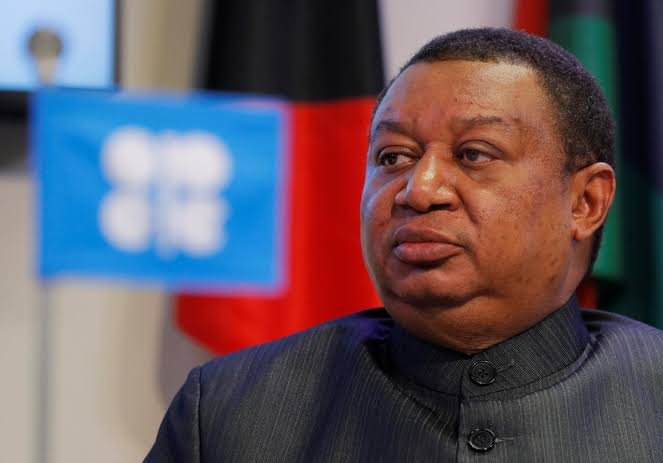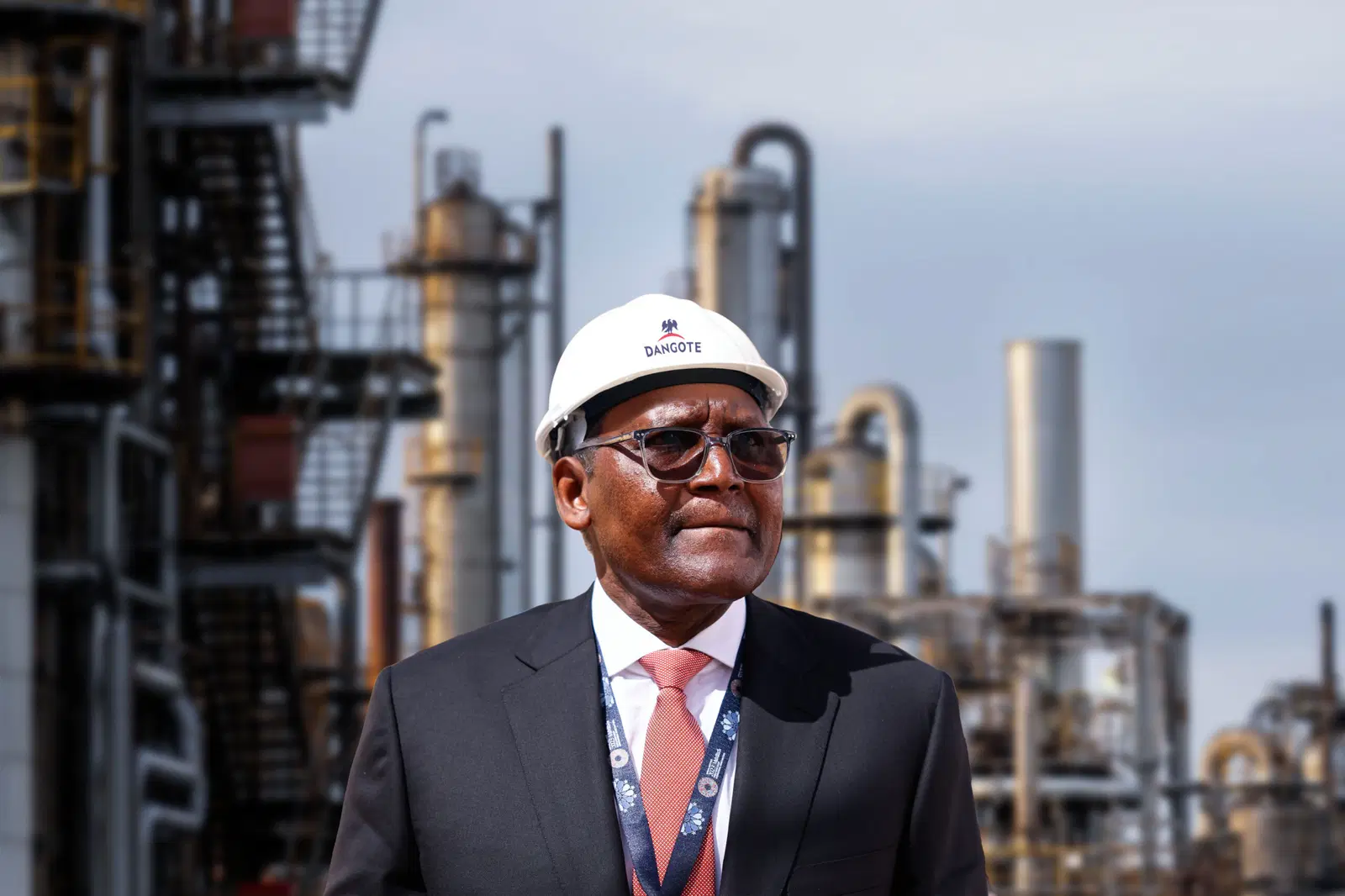OPEC, Non-OPEC and Oil Market Stability
By HE Mohammad Sanusi Barkindo
I welcome you to this the 49th Meeting of the Joint Technical Committee (JTC). Today we set the stage for a busy week of meetings, the outcomes of which will have a lasting influence on the crude oil markets in the months to come. As we prepare for the third Joint Ministerial Monitoring Committee (JMMC) and second OPEC and non-OPEC Ministerial Meeting of Opening Remarks of HE Mohammad Sanusi Barkindo 49th Meeting of the Joint Technical Committee (JTC), 2 March 2021 © 2021 Organization of the Petroleum Exporting Countries 2 the year, it is important to take stock of how much has been accomplished over the past year.
Both the global economic outlook and oil market prospects show signs of continued improvement. The headwinds of uncertainty that shocked and disrupted the market last year continue to abate.
The economic recovery is gaining momentum. This is reflected in our latest global growth estimate of 4.8% for 2021, up from the 4.4% projection we shared at our last meeting. This is a major turnaround from the grim conditions of 2020, with our most recent estimates showing the global economy plummeting by 3.9%.
2021 is the Year of the Ox in China, a fitting symbol for this sturdy economy. China, which emerged from last year as the only major economy to remain in positive growth territory, continues to exceed expectations and is forecast to grow by 7.4% this year.
India’s economy, which fell 8.2% in 2020, is now expected to expand by 7.5% in 2021. We had earlier expected these key economies to expand by just under 7% this year.
Globally, historic levels of fiscal and momentary support continue to lubricate the economic engines and keep us in forward gear.
Last week, Federal Reserve Chairman Jay Powell put to rest any idea of an immediate course reversal when it comes to supporting the US economy.
This welcome news was followed by the G20 finance ministers and central bankers announcing on Friday [26 February] that they will continue to support a strong global recovery, and they lent support to the idea of boosting the International Monetary Fund’s firepower so it can further assist developing countries.
The Biden Administration’s massive fiscal stimulus package, which passed its first legislative hurdle by winning US House approval last Saturday, continues to kindle hope for a sustained rebound.
Against the backdrop of encouraging developments, oil demand remains on course to grow by 5.8 mb/d to just around 96 mb/d.
The encouraging global economic developments and resilient demand in Asia are upside factors, especially beyond this quarter.
Initial data from January this year show that crude oil processing in India rose to its highest level since November 2019, fuelled by rising economic and industrial activity. This positive regional outlook is underscored by the comments of Dharmendra Pradhan, India’s Minister of Petroleum, Natural Gas and Steel, at the recent IEA-IEF-OPEC Symposium on Energy Outlooks. Minister Pradhan stated that his country’s energy demand is expected to rise by 3% per annum through to 2040, around three times the anticipated global demand increase.
Our capable OPEC analysts will go into more detail about inventory levels in a moment. For now, let me say that the outlook continues to move in the right direction, and the data we have before us reflects improvements over last month’s report to this Committee.
Preliminary data for January shows that OECD commercial stocks declined by around 11 Mb. At 3 billion barrels, they were around 140 Mb higher than the same time one year ago and about 126 Mb above the average for 2015 to 2019.
Turning to the latest figures on days of forwarding cover, OECD commercial stocks fell by 1.4 days from December to January, to 69.2 days, which is slightly lower than a year earlier, but 7.4 days above the pre-pandemic five-year average.
The oil storage situation also appears to be aided by a refocus in the US tight oil sector from production to generating cash flow and rewarding investors. US crude production fell by more than 10% in mid-February following extreme winter in key producing states like Texas, helping to offset the rise in US crude stocks due to the significant drop in refinery utilization rates.
Also regarding inventories, global short-term floating storage has fallen every month since October and stood at 142 Mb in January this year, significantly less than the 250 Mb reached in mid2020.
In a further sign of light on the horizon, the key benchmarks have risen steadily so far this year along with other commodities, in particular metals, and traders continue to take a strong positive position in oil. Since January, the futures price structure of all three key markets has been in sustained backwardation, an indication that the market is tightening and the rebalancing process is gaining speed.
We have come a long way from a year ago. The days of GDP and oil demand figures being in the red because of the pandemic-induced shock appear to be behind us.
Yet ‘cautious optimism’ remains the phrase of the day. We must be mindful that COVID-19 infections continue to rise and malicious mutations are spreading across countries and regions. The World Health Organization announced yesterday that the number of new global infections rose last week for the first time in seven weeks. The cumulative number of COVID-19 cases now exceeds 114 million and more than 2.5 million people have lost their lives – a heart-breaking illustration of how much ground still needs to be covered to defeat the virus.
The full potential of our economies cannot be unleashed so long as the pandemic continues to haunt us.
Nonetheless, we have abundant evidence to show that the historic voluntary production adjustments agreed last year by the Declaration of Cooperation (DoC) participating countries were the right course of action – at the right time.
Today, the market stabilization and rebalancing process continue apace. Furthermore, our mutual efforts continue to benefit from the trusted and respected partnerships and relationships we have nurtured at the highest policy levels and with a wide variety of stakeholders.
The sharing of data, information, and know-how is bringing wider benefits to the market and supporting the stability of critical energy supplies that the world needs to recover, regain momentum and grow in the years to come.
Recalling again the engaging discussions during the IEA-IEF-OPEC Symposium on Energy Outlooks, we heard over and over from respected experts the vital importance of inclusive dialogue and cooperation in safeguarding the world’s future energy supply. Mr. Chairman, Mr. Co-Chairman, ladies and gentlemen, In our lifetime, we have witnessed seven oil cycles. We have also seen humans walk on the moon; old rivals on Earth work side-by-side in space; growing numbers of countries working to expand humanity’s reach to other planets. I am proud to say that one of the newest countries joining the exploration of space is an OPEC Member, the United Arab Emirates. Just as I am confident that humans will one day walk on Mars, I am certain that our world will soon emerge from the COVID-19 pandemic with restored hope and potential.
As the Declaration of Cooperation participants carries on with the unfinished business of helping to restore sustainable market stability for one of our planet’s most precious commodities, it is important that we continue to work together for the sake of this noble cause. Achieving our goals remains of mutual benefit to participating countries, as well as consumers and the global economy.
Allow me to reiterate the positive role played by the Kingdom of Saudi Arabia through its voluntary additional adjustment of 1 mb/d in February and again this month. This generous decision has reinforced the existing voluntary adjustments undertaken by all the participating countries. When I think about the accomplishments of the Declaration of Cooperation, I am reminded of what Warren Buffett said about the importance of long-term vision:
“Someone’s sitting in the shade today because someone planted a tree a long time ago.” Thank you, Mr. Chairman, and I look forward to today’s presentations by and deliberations.







